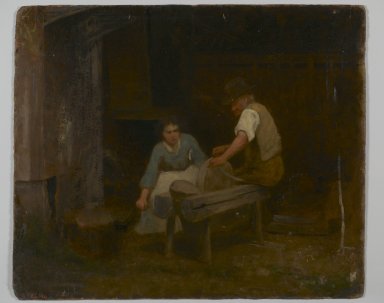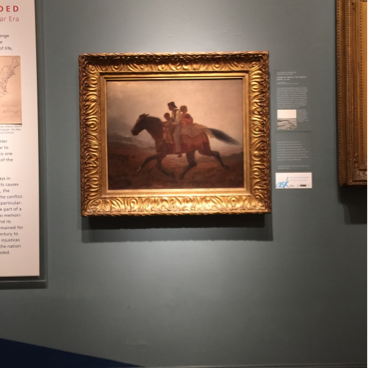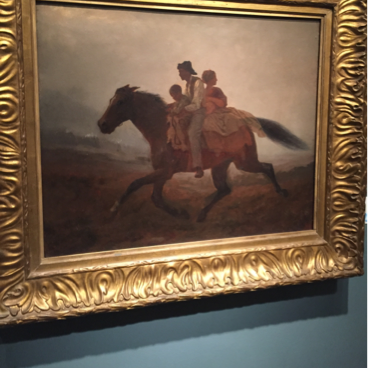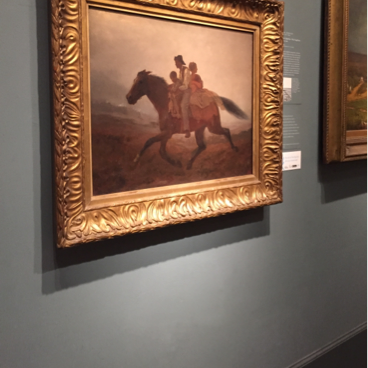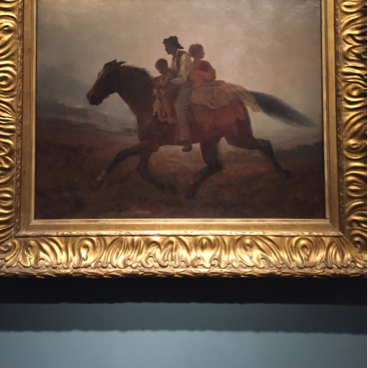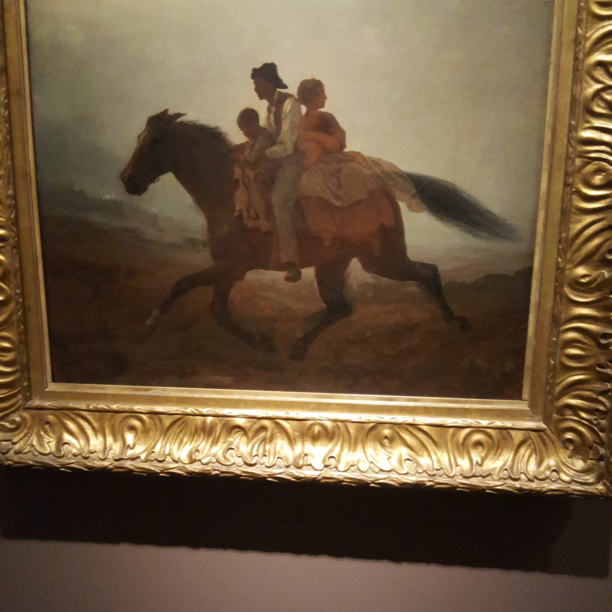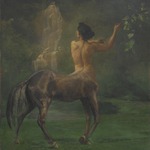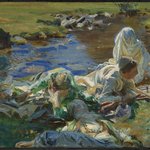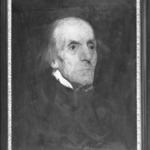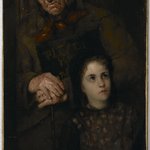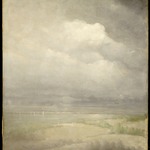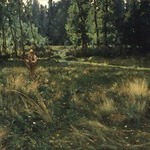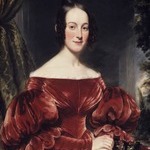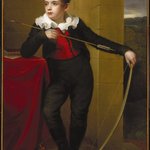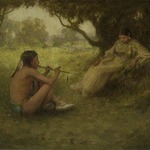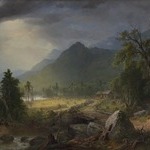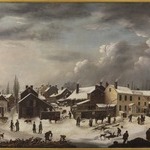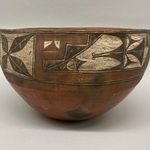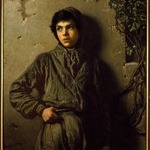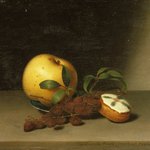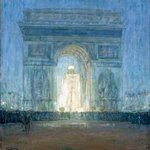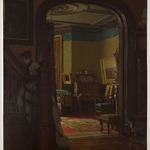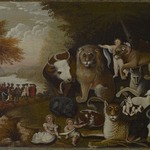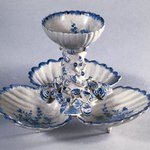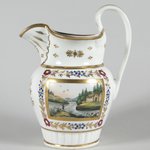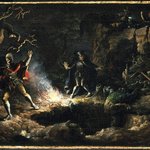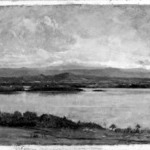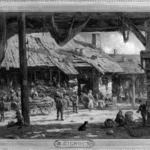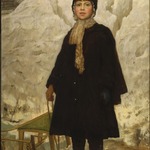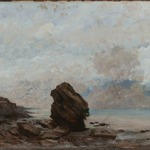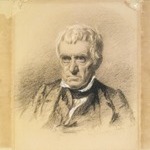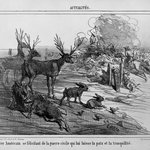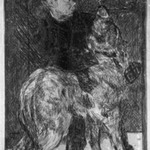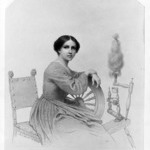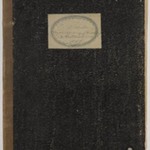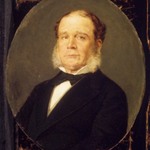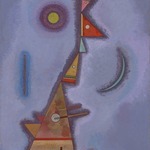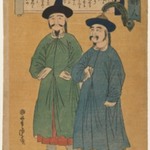
A Ride for Liberty -- The Fugitive Slaves (recto)
Eastman Johnson
American Art
On View: American Art Galleries, 5th Floor, Radical Care
In this composition, Eastman Johnson portrayed an enslaved family charging for the safety of Union lines in the dull light of dawn. The absence of white figures in this liberation subject makes it virtually unique in art of the period—these African Americans are independent agents of their own freedom. Johnson claimed to have based the painting on an actual event he witnessed near the Manassas, Virginia, battlefield on March 2, 1862, just days before the Confederate stronghold was ceded to Union forces.
In agony close to her bosom she press’d The life of her heart, the child of her breast:— Oh! love from its tenderness gathering might, Had strengthen’d her soul for the dangers of flight. But she’s free!—yes, free from the land where the slave From the hand of oppression must rest in the grave; Where bondage and torture, where scourges and chains Have plac’d on our banner indelible stains.
—Frances Ellen Watkins Harper (African American poet), “Eliza Harris” (1854)
In agony close to her bosom she press’d The life of her heart, the child of her breast:— Oh! love from its tenderness gathering might, Had strengthen’d her soul for the dangers of flight. But she’s free!—yes, free from the land where the slave From the hand of oppression must rest in the grave; Where bondage and torture, where scourges and chains Have plac’d on our banner indelible stains.
—Frances Ellen Watkins Harper (African American poet), “Eliza Harris” (1854)
MEDIUM
Oil on paperboard
DATES
ca. 1862
DIMENSIONS
21 15/16 × 26 1/8 in. (55.8 × 66.4 cm)
frame: 3 × 30 3/16 × 35 in. (7.6 × 76.7 × 88.9 cm) (show scale)
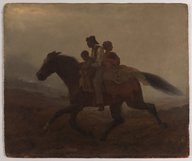


SIGNATURE
Signed lower right: "E. J."
COLLECTIONS
American Art
ACCESSION NUMBER
40.59a-b
CREDIT LINE
Gift of Gwendolyn O. L. Conkling
PROVENANCE
1906, inherited from the artist by Elizabeth Williams Buckley Johnson; 1927, inherited from Elizabeth Johnson by Ethel Eastman Johnson Conkling; 1931, inherited from Ethel Eastman Johnson Conkling by Gwendolyn O. L. Conkling; February 26, 1940, gift of Gwendolyn O. L. Conkling to the Brooklyn Museum.
Provenance FAQ
EXHIBITIONS
MUSEUM LOCATION
This item is on view in American Art Galleries, 5th Floor, Radical Care
CAPTION
Eastman Johnson (American, 1824–1906). A Ride for Liberty -- The Fugitive Slaves (recto), ca. 1862. Oil on paperboard, 21 15/16 × 26 1/8 in. (55.8 × 66.4 cm). Brooklyn Museum, Gift of Gwendolyn O. L. Conkling, 40.59a-b (Photo: Brooklyn Museum, 40.59a_PS9.jpg)
IMAGE
overall, 40.59a_PS9.jpg. Brooklyn Museum photograph, 2016
"CUR" at the beginning of an image file name means that the image was created by a curatorial staff member. These study images may be digital point-and-shoot photographs, when we don\'t yet have high-quality studio photography, or they may be scans of older negatives, slides, or photographic prints, providing historical documentation of the object.
RIGHTS STATEMENT
No known copyright restrictions
This work may be in the public domain in the United States. Works created by United States and non-United States nationals published prior to 1923 are in the public domain, subject to the terms of any applicable treaty or agreement.
You may download and use Brooklyn Museum images of this work. Please include caption information from this page and credit the Brooklyn Museum. If you need a high resolution file, please fill out our online application form (charges apply).
The Museum does not warrant that the use of this work will not infringe on the rights of third parties, such as artists or artists' heirs holding the rights to the work. It is your responsibility to determine and satisfy copyright or other use restrictions before copying, transmitting, or making other use of protected items beyond that allowed by "fair use," as such term is understood under the United States Copyright Act.
The Brooklyn Museum makes no representations or warranties with respect to the application or terms of any international agreement governing copyright protection in the United States for works created by foreign nationals.
For further information about copyright, we recommend resources at the United States Library of Congress, Cornell University, Copyright and Cultural Institutions: Guidelines for U.S. Libraries, Archives, and Museums, and Copyright Watch.
For more information about the Museum's rights project, including how rights types are assigned, please see our blog posts on copyright.
If you have any information regarding this work and rights to it, please contact copyright@brooklynmuseum.org.
RECORD COMPLETENESS
Not every record you will find here is complete. More information is available for some works than for others, and some entries have been updated more recently. Records are frequently reviewed and revised, and we welcome any additional information you might have.
